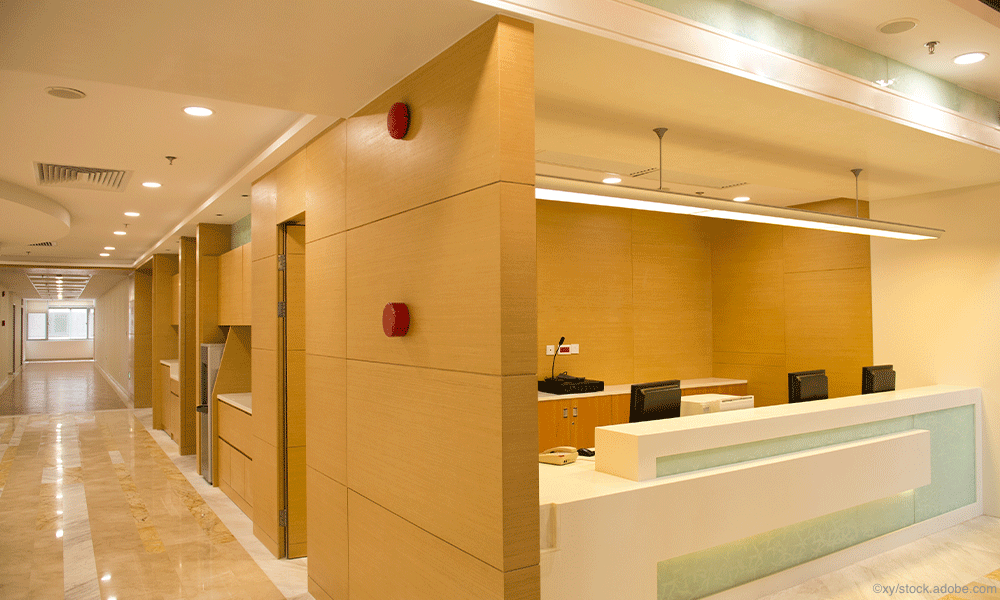3 keys to make the most of your front doors
Patients drawn by new access points need guidance

Physician group practices are serving their communities well in creating a diverse outpatient landscape: more care sites in more convenient locations with expanded hours and more virtual options. These investments open a lot of new front doors to patients, bringing care closer to home—or in the home.
To really expand access in an ongoing way, a practice needs to guide these patients and begin to build a long-term and personal relationship. That requires a strategy to convert on the practice’s front doors, both physical and virtual. Here are some elements to consider as part of the right conversion strategy.
Go beyond today’s need
At Providence Medical Group (PMG), the employed physician practice of Providence Health & Services in the Pacific Northwest region, the greatest area of opportunity comes through the group’s “on-demand” services, says Dawn Tolotti, Executive Director, PMG Operations. These include immediate and urgent care, walk-in clinics and virtual care.
“The benefit of us being on a single EMR is we can see the patient’s history and know if they have an established relationship with a PCP,” Tolotti says. “Our on-demand care teams, while addressing the immediate need, can also touch on other concerns and will discuss the importance of establishing a relationship with a PCP.”
A key to accomplishing this is following up with patients after the visit in a personalized way to reinforce the importance of establishing care. Outreach grounded in health communication principles motivates patients to convert and can also capture patient responses relative to obstacles.
Deliver personalized directions
In addition to convenience, patients want you to know them: what they should do next, why they need to do it, when they should do it, and where they should go. It means to know the patient needs to complete a necessary visit and then tell them where they can accomplish that based on their insurance, location, clinical needs and previous care decisions.
Location triage—when to visit a retail clinic versus urgent care, for example—is an important aspect of providing guidance. Patients who have not had recent access to healthcare providers may find the expanded array of choices confusing.
At UNC Healthcare, frequent visitors to its emergency department receive focused outreach, says Robb Malone, chief operating officer of UNC Health Alliance, a physician-led clinically integrated network. “Outreach that targets patients immediately after a series of frequent ED visits and redirects those patients to their closest immediate care has improved our patient experience and retention as well as lowered the total cost of care for us and our patients,” Malone says.
The next level of navigation is a personalized, digital engagement that provides patients with guidance on the next best step in their care, taking their medical history and life circumstances into account. Part of knowing our patients is knowing the best communication channels to engage each patient. To accomplish that, practices must be able to use a wide variety of communication channels.
Simplify the experience
We ask a lot of patients. Even those who are motivated to seek care and follow a plan find it hard to stay on track. Allina Health in Minnesota focuses on making the experience as easy as possible for convenience care patients to continue on their care journeys, says Chris DuFresne, vice president, experience and marketing operations.
For example, with COVID testing, Allina Health has multiple touch points to activate the new patient for Allina’s digital tools. “This allows them to get their COVID test results much quicker, and they don’t have to worry about missing a call from us,” DuFresne says. The digital tools also make scheduling any follow-up care as easy as possible to help the patient want to come back, DuFresne says.
Digital tools also reduce the administrative burden, by efficiently prompting patients to move forward with necessary care and automating tasks such as collecting patient reported outcomes and enrolling patients in new programs.
Providing a wide range of access points to care is a great start on drawing in patients who have struggled to find a foothold in the healthcare system. Practices need to have a deliberate set of strategies and tactics in place to enable patients who have come through these many front doors to seek all their care within the system. Providing personalized, digital guidance to these patients helps them continue on their way toward better health.
About the Author
Ben Albert is co-founder and CEO of Upfront Healthcare, a platform to deliver proactive communication and personalized engagement for all patients. Albert previously was founder and CEO of Care Team Connect, a SaaS-based provider care management platform that was acquired by Advisory Board.